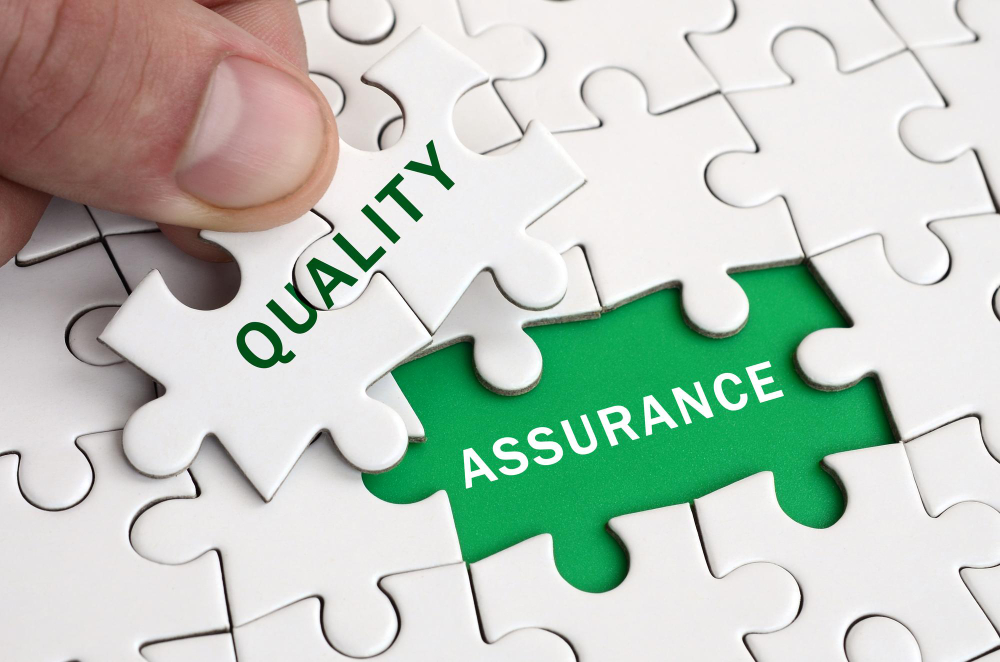
Discover how to start a career in data analytics even with no experience. Learn the steps, skills, portfolio tips and training path, perfect for beginners and backed by DelonAcademy’s beginner-friendly courses
When Chima graduated from university, he had no programming background, no data analytics role in sight, and frankly, he felt the data industry was unreachable. But one evening, after watching a short YouTube video on how businesses make decisions using spreadsheets and dashboards, something clicked. He realized: maybe I could start a career in data analytics after all.
Fast-forward eight months: Chima landed a junior data analyst role at a fintech start-up in Lagos, and is now working with SQL, Power BI and monthly sales dashboards. The only change? He committed to structured learning, built a portfolio, and shifted mindset from “I don’t qualify” to “I can show value”.
If you’re reading this, you might be just like Chima, no experience yet, but a desire to start a career in data analytics. Good news: you absolutely can. And with the right plan and training, you can turn that possibility into reality.
Why Data Analytics Is a Smart Entry-Point
The demand for data analytics professionals continues to surge. According to a recent article by Coursera, job growth for entry-level data analysts is strong and the pathway is open to beginners.
Because organizations, especially in sectors like fintech, FMCG, and services, need people who can turn raw data into insights and decisions, your lack of prior experience doesn’t have to be a barrier. What matters is your ability to learn the tools, demonstrate value, and show you can handle data responsibly.
Step 1: Understand What the Role Actually Requires
Before you begin your training, clarify what a data analyst does and what hiring managers look for. Duties often include:
- Data collection and cleaning
- Analyzing trends and patterns
- Visualizing results and telling the story of the data
- Presenting insights to teams and decision-makers
It’s not just about flashy dashboards, it’s about making data actionable.
By understanding the role, you’ll pick training and projects that align with real job requirements.
Step 2: Acquire the Core Technical Skills
Even with no experience, you can build foundational skills. Key areas include:
(a) Spreadsheets & Excel
Excel remains ubiquitous in business data-analysis tasks, pivot tables, formulas, charting and data cleaning.
Start with mastering Excel because it gives you confidence, and many small-to-medium companies still rely heavily on it.
(b) SQL for Data Querying
SQL is the language of databases, essential for extracting and manipulating data. Indeed’s guide lists SQL among must-have skills.
You’ll learn to select, filter, join, and summarize data.
(c) Data Visualization Tools
Tools like Power BI, Tableau or even Excel visuals help you communicate insights. Learning visualization adds depth to analysis.
(d) Basic Programming / Analytics
While not mandatory for every junior role, having Python or R skills gives you an edge. Clean data, run simple analyses, generate visuals. Many training programs include these.
(e) Mathematics & Statistics Fundamentals
You’ll need to understand basic statistics (mean, median, correlation) to ask the right questions and interpret results.
Step 3: Build a Portfolio, Even Before a Job
When you have no professional experience, a portfolio becomes your proof of capability. Here’s how to create one:
- Choose publicly-available datasets (e.g., from Kaggle) and build analysis projects: “Sales trends in Lagos FMCG”, “Customer churn in a telecom data set”.
- Document the problem you addressed, the data you cleaned, the tools you used, and the insights you found.
- Visualize results in dashboards or a narrated slide deck.
- Host your project on GitHub or a small website/portfolio page, and include it on your LinkedIn profile.
Indeed emphasizes the importance of a portfolio when you have no experience.
This portfolio demonstrates that you can do the work, not just learn about it.
Step 4: Develop Your Soft Skills & Business Acumen
Technical skills aren’t enough. Employers also look for:
- Communication: Can you explain findings in plain language?
- Critical thinking: Can you ask the right questions of the data?
- Organization: Are your datasets tidy, your files labelled, your insight logical?
- Learning agility: Are you able to pick up new tools or domains quickly?
Many beginners overlook these “soft” yet crucial skills, but they substantially increase your readiness for a role.
Step 5: Get Structured Data Analytics Training
Having no experience means you may benefit from a structured path. This is where data analytics training plays a vital role.
When selecting a training program, look for:
- Curriculum covering Excel, SQL, visualization, project work
- Portfolio project components
- Mentorship or career-support features
- Beginner-friendly (doesn’t assume prior coding or analytics background)
As Simplilearn reports: yes, you can start a career in data analytics with no experience, provided you commit to the right training and projects.
At DelonAcademy, we’ve designed beginner-friendly courses in Data Analytics Fundamentals, SQL & Visualization, and Junior Data Analyst Job-Prep, built to help you transition quickly into your first role.
Step 6: Apply, Network & Gain Practical Experience
Even after training and portfolio work, your first role could be on the “entry,” “junior” or “assistant” side of data analytics. Here’s how to maximize your chances:
(a) Tailor your resume and LinkedIn profile
- Highlight your portfolio, projects, tools used
- Use keywords like “data cleaning,” “SQL queries,” “dashboard creation”
- Emphasize transferable skills (if you’re switching from admin, sales, marketing)
(b) Network and find opportunities
Join LinkedIn groups for data analytics, attend webinars, engage in discussions. Coding Temple highlights networking as a key step for beginners.
Connect with hiring managers, ask for advice, and be proactive.
(c) Volunteer or intern
Even a part-time data entry or reporting role can lead into junior analytics. The Career Village community suggests internships or volunteer gigs as stepping-stones.
(d) Persist in applying
Entry-level roles may require multiple applications—each application refines your resume and interview confidence. Indeed’s guide alerts to the reality of search. Indeed
Step 7: Leverage DelonAcademy’s Beginner-Friendly Training Path
At DelonAcademy we’ve built a roadmap to support beginners with no experience:
Track 1: Foundations (4-6 weeks)
- Excel for Analytics: functions, pivot tables, data cleaning
- Introduction to Statistics & Data Thinking
- Portfolio mini-project: Analyze a public dataset and present key insights
Track 2: Tools & Automation (8-10 weeks)
- SQL Essentials: queries, joins, aggregations
- Data Visualization: Power BI or Tableau basics
- Python for Analysts: basics of data manipulation
- Portfolio project: Build dashboard and SQL-driven insights
Track 3: Job-Readiness & Application Pipeline (4 weeks)
- Resume & LinkedIn optimization
- Mock interviews, case study walkthroughs
- Final Capstone Project: End-to-end data analysis & presentation
- Job support: Introductions to partner companies, application pipeline guidance
With no experience, this structured path helps you gain the skills, build the portfolio, and ready yourself for actual job roles. Many graduates of our program have moved into junior data analyst roles within 3-6 months.
Step 8: Transition and Grow Your First Job and Beyond
Once you land your first role, your journey doesn’t stop. Here’s how to evolve:
- Develop subject-matter knowledge: Understand the business domain your employer operates in (finance, marketing, operations)
- Expand technical toolkit: Move from Excel/SQL to advanced Python, machine learning, big data tools
- Specialize or verticalize: Become a marketing analyst, financial analyst, operations analytics specialist
- Show impact: Move from “I generated charts” to “I improved process & saved X% cost”
- Continual learning: The data field evolves fast bootcamps, online courses, communities matter.
Common Myths & Realities for Beginners
Myth 1: “I need five years of experience before I can even apply.”
Reality: Many entry-level data analyst roles are explicitly targeted at beginners and list tools and portfolio work above years of experience.
Myth 2: “I must have a degree in computer science or statistics.”
Reality: While helpful, many roles prioritize skills, portfolio, and demonstrable capability. CareerFoundry says you can become a data analyst with no experience or degree.
Myth 3: “Switching careers is too late for me.”
Reality: With a clear plan, beginner-friendly training, and persistence, career changers successfully transition. Chima’s story above shows that.
Why You Should Act Now
The data analytics field is growing, and businesses need more practitioners who can turn information into action. With the right training, data analytics training, and a portfolio, you can beat competition, even without prior professional experience. If you wait, you risk falling behind in a market where tools and expectations evolve rapidly.
Final Thoughts
Starting your career in data analytics with no experience is not only possible, it’s practical. By:
- Learning the role and responsibilities
- Building key technical and soft skills
- Creating a strong portfolio
- Networking, applying, and gaining real experience
- Taking structured training with DelonAcademy
- Landing that first role and growing from there
…you move from “I don’t qualify” to “I can show value.”
Your first job might be the hardest step, qbut it’s also the beginning of an exciting, high-impact career. At DelonAcademy, we’re ready to help you start strong, succeed fast, and open doors into the world of data analytics.
Ready to start your journey? Learn more about our beginner-friendly courses today.
























